A Conversation With Thomas Glassford
Rose Mary Salum
Download Complete PDF / Descargar
Rose Mary Salum: Your early sculptures were based on local and natural materials (dried gourds, leather, chicharrón), but you’ve increasingly turned to more industrial and urban materials. What is or what have been your motivations?
Thomas Glassford: It’s true that the work created here in Mexico, in particular 17 years ago, was much more based on a lot of natural materials, from wood to a lot of gourds, which became a signature element of my work and leather. The defi nition of local became very relative; many people saw it as being very Mexican in its orientation.
The gourd had been known world wide as a vessel, and a lot of the work at that time was about, and still continues to be, about vessels, as well as utilitarian forms: very simple utilitarian forms. I think that the transition began in ‘94 when I started synthesizing organic elements, [and as the work progressed they continued] their synthesis. The leather landscapes in the earlier works, using these hides, or chicharrón (pork rinds), definitely became influenced by my period of stay in the urban environment of Mexico City. As I found other skins and other types of materials, they were synthesized, into my palate of common materials. For example, things like florescent tubes or anodized aluminum siding were reworked to give it another language. The commonality of materials and my surroundings have infl uenced me that way.
This transition or return is an element of the organic and hand used elements that are coming back to my work in the form of broom stick elements that are collected from the streets. What interests me is that they are worn and used by the pushing of hands, they’re in the possession of people who write their name on them, the location where there are supposed to being stored, and the way people are possessive over broomsticks long after their utility is lost.
This makes them a very ancient tool, or a primarily tool. The primary tools of civilization, like the vessels used to move water away from its source, or in this case, a stick used to gather reeds or treasures or any other type of element that push ways or clean in space in this early domestic and still very evident and prevalent way of keeping things ordered. Collecting the handles themselves, using them as an abstraction within a larger construct and actually building this kind of vessels themselves to maintain and to hold them in place starts to speak about the senses of ordering.
Going back to the beginning, the gourds came from something that I was doing before I moved to Mexico. I had a small farm in South Texas for a couple of years, thinking that I could also do my art work in the evenings, and it ended up becoming this massive fulltime job. The struggles of trying to make it all work, be it the amount of care that went into taking care of a piece of produce so that it comes into fruition and makes it into a market were all-encompassing. Earlier I was speaking of the fi rst months I spent in Mexico City in the center town. Almost daily I would fi nd myself in markets, mainly the Merced market in the center town, looking at the constructs of fruits and vegetables there, and being very emotionally overtaken, realizing how much work went into them, and how many hands moved over every tomato, or apple or piece of produce that was there, and these ladder displays, these walls of movable parts that were constantly being packed and moved and changed on a regular basis as installations.
So I think it´s interesting to ask me how that transition is made, but it is constant, it continues to happen. There’s certain hardness that has come into my work on that level. Earlier on I didn’t work with color at all, only with natural materials and the way they came together, so it used to be very neutral, or at least had only natural colors: simply stainless steel, blacks and browns. And now there’s an excess of color in my work. There’s also a certain return to organics, which is piquing my interest.
RMS: In a way you’re playing with possession and time. I’ll quote you: “If you wait long enough, what it seems defacing becomes classic?” Is time a deciding element in your work?
TG: Absolutely, yes. At a certain point I became really critical of it, at least of the manner in which modern humanity expresses the idea of timelessness. I say we have all these surfaces, like stainless steel, porcelain, or different elements that don’t allow them to be marked in any way such that it betrays the passing of someone the use of it by anybody else. There is a certain kind of sterility that I found in people’s minds that I believe is very perverse. That was the sort of commentary that begot the work. It may have something to do with the harsher or sterile pieces, which later became a play on themselves. But yes, use and wear of time, the patina of use, especially of hand movements or a step that has been so worn down because of excessive use… I definitely find it very seductive.
RMS: Why expressing your ideas through art? Is it beauty?
TG: Forms of expression are relative in certain ways, and I just find my self to be more of a visual person. I work best by constructing and putting things together. I find that it’s a language that I can most easily manage. I think it’s quite evident from this interview that words are not necessarily the way to express my things or ideas. I also find art to be an abstract language exceedingly effective in evoking emotional tendencies, as opposed to other formats, or music. For me in particular, that is. Also, since I was very young, I found myself collecting different materials and thinking of making compositions with them, so its something that’s always been there.
RMS: You’ve approached many times the subject of narcissism; yet, you’ve also mentioned that it’s a theme much negated as manipulated. Could you elaborate on that?
TG: I think in acts of communication, you’re not only drawing from banks of your own experience and thoughts, but ways to address the person you are trying to communicate with. And in regards to art, people tend to look for a certain reflection of their own values in the work. Whether it be a XVII Century landscape or not, one has the expectation to meet their vision of realty. Similarly, think many people spend a lot of time watching television in an effort to reflect about their own lives. At the same time, in the art world, those objects express those sorts of realities, consequently, in my opinion, certain levels of vanity. Not only by the artist, but also the viewer or collector who becomes an aspect of how these pieces reflect their own position or taste or values. A lot of what I try to work with are these very common and often distasteful materials or ideas, recently much more abstracted, and I try pushing them in a certain way such that it could affect the very abstract, contemporary and certainly refined nature of the public. I try to challenge their own position: how they’re looking at something or considering it in some way as something of value.
I play a lot with mirrors for that exact reason. Mirrors have always been an integral part of interiors; capturing, moving and controlling light as well as capturing, moving and controlling images. The viewer has some kind control of them through their perspective. Their primary function as a tool to see ourselves, and they open up spaces within, not only in our living rooms, but in own vision of ourselves. We see an image that, of course, is completely contrary to the way the rest of the world sees us. I think this in itself says a lot about narcissism, which I feel completely fascinated by. We are so accustomed to this vision of ourselves, while a reflection is the exact opposite of the way actually people see us. We really never understand or take into account our own perspective or our angles. I think I’ve always been fascinated by the way people, when walking on the street, look into a store from a window just to see if everything is straight, or the faces people make when they look at the mirror; they make a face they never show until they see themselves in a mirror again… Straightening and pulling muscles, looking at themselves with this very severe smile, or whatever think they look like, and of course, as soon as they walk away they look nothing like that. And returning to what I was saying earlier with patina, time, sterility of materials and contemporary culture, there are levels of vanity associated with them because people always feel in such control of these images and their own bodies. A lot of the earlier work has a lot to do with the body. The gourds became figurative elements of the body; the way they’re kind of attacked, censured, or held in a certain ways, which become sadomasochistic forms of harnessing images. The same is true with the early landscape paintings that I did in leather, having this skin that’s stretched and pulled and held in a certain way to try to express a level of youth, or that image that people want to try to sustain and hold on to. Fifteen to twenty years ago I was very interested in the way society had those ideas.
RMS: Now that you’ve approached the subject of perspective and point of view, would you say that there’s a lot of influence of the kinetic art or opt art in your work?
TG: Certainly. There’s a lot of modernism, but also a lot of classicism in my work; inevitably there’s a discourse with it through similar effects and appearances. Also, when speaking of minimalism, or opt art, or certain elements of pattern designing, they tremendously influenced my work. But at the same time, there is a very baroque, collective art memory that comes in tandem with it. The commonality of these materials is something that’s not necessarily new, but I’m trying to push off from that established base of what that work has become: at that time they were formal elements of elegance within a visual universe. Seeing these kinds of materials no longer have the shock they inspired in 1965. Now they represent this exquisite element of refinement and value. I pushed into abstraction to liberate the language of the materials and the ideas I was playing with. There’s an aspect of the work which makes it very decorative and that challenges me: I’m trying to do this abstract work, but at the same time it falls into some aesthetic trap.
When I started working with these aluminum siding pieces, which are more common in Mexico than the States, they represented a social class or a certain manner of constructing (people making their garage doors out of them)… one can say they represented cheapness, or better yet, in the art world the material was considered tacky. So there I was playing with the kitschy aspect of the objects, pushing them beyond their standard position in society. The same is true for the cafeteria-like plates, something that the world came to know in the fifties and sixties. These unbreakable, plastic, reusable, cheap pieces of china, with this neutral oatmeal beige color, which is not very attractive. The intention was to include the concepts of industrialized materials, their role in our comfort and lifestyle, the cheapness of them as well as the memories associated with the pieces.
A parallel would be the example of birds today, who build nests to attract a mate, and begin to integrate these inorganic elements like cigarettes, or pieces of foil, or shiny strings or brightly colored elements that they can take and incorporate into the weavings of their nest. I think of society doing the same thing with art by decorating their homes.
RMS: In a way you’re an alchemist; you’re trying to liberate the language of the elements you use. You’re using cheap materials transforming them into beautiful and elegant pieces of art.
TG: Thank you.
RMS: I’m serious, there’s nobody that hasn’t seen your work without perceiving it as velvety and elegant.
TG: Yes, indeed, they look like velvet pieces. It’s strange to become a catch twentytwo. And in the art world, there is a level of shock and challenge presented with pieces, and it was certainly true of my work, which started out with a certain level of confrontation and then the idea became completely accepted. Later on it becomes a status symbol, creating its own materiality, and at a certain point, you’re caught in your own joke. Not that I was doing it as a joke, necessarily, because I was looking at the beauty of the material and I was trying to push it. I’m always interested in all those little pieces of trash, especially the concept of organic vs. inorganic. A parallel would be the example of birds today, who build nests to attract a mate, and begin to integrate these inorganic elements like cigarettes, or pieces of foil, or shiny strings or brightly colored elements that they can take and incorporate into the weavings of their nest. I think of society doing the same thing with art by decorating their homes. These pieces become representations of their life and their environment and attract other members of society as well. We inevitably do that. As our world becomes more contaminated by man made products, with the manipulation of surfaces, it becomes about reinterpreting those materials and playing with them. Also, the materials that I use pose a challenge to me as they become established much quicker than in previous times. After months it becomes accepted as a form of beauty, so how does one break that to keep moving into another direction?
Posted: April 12, 2012 at 8:38 pm


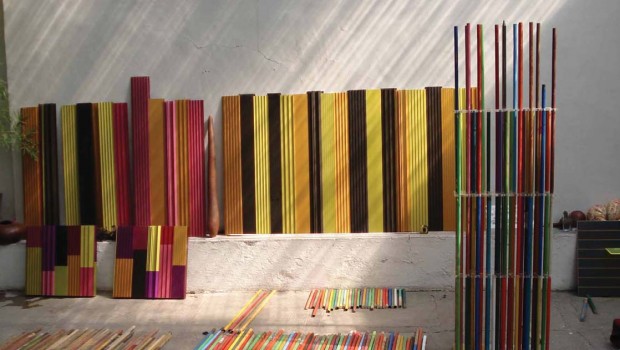
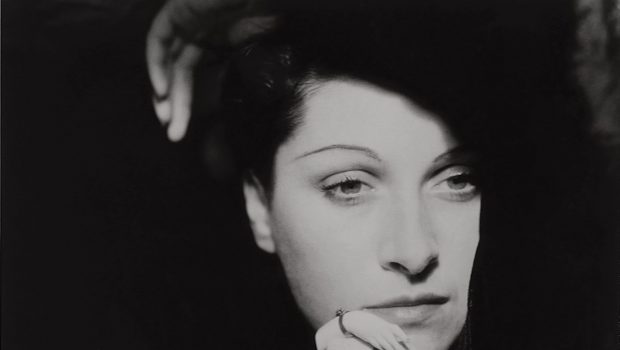
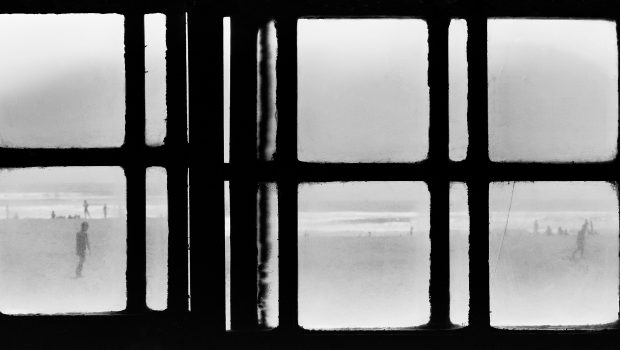

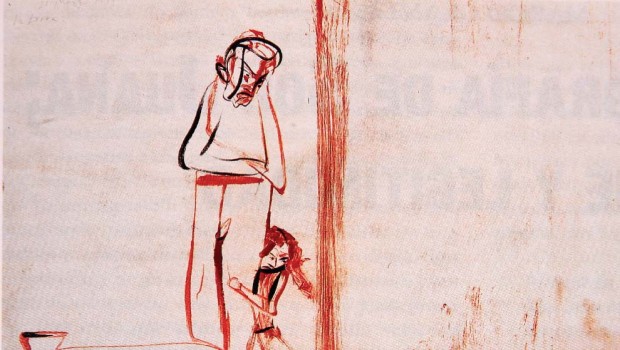
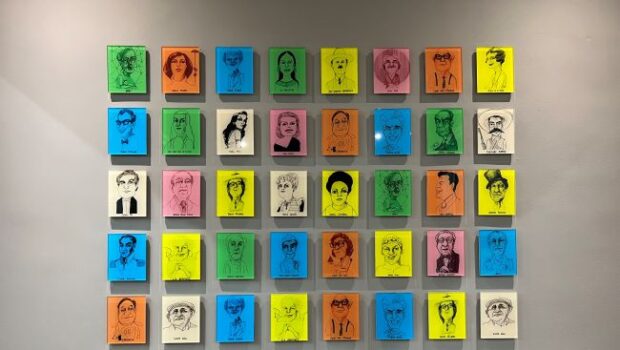
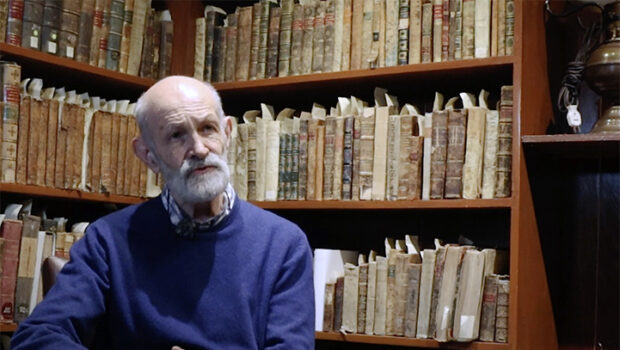
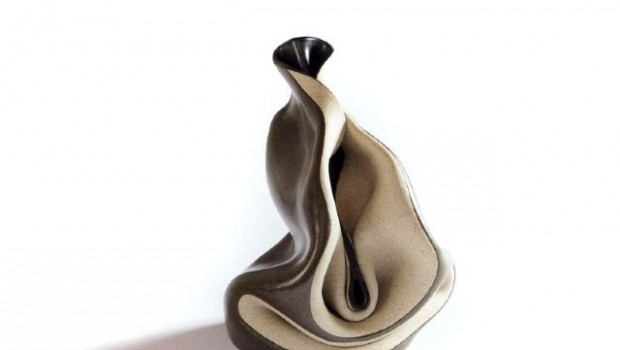
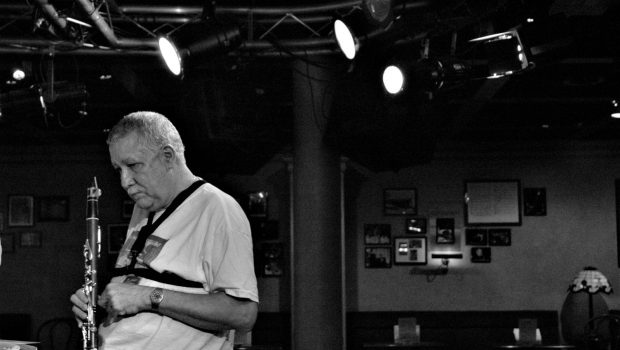
Hola, do you know how I can get in contact with the artist?
Thank You,
Sally Perrin